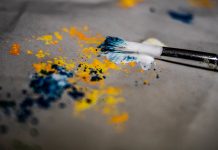An experimenter is like a hunter who, instead of waiting quietly for game, tries to make it rise, by beating up the locality where he assumes it is. – Francis Bacon, 17th-century English philosopher
Imagine you are building a house. In the middle of construction, with the excavator digging deep to make room for the foundation, at some point it hits a big, unmovable rock. What is the solution to this problem? In this article we will explore multiple, creative methods for solving problems, both in science and in everyday life. I will then present arguments from a few authors who claim we owe it to ourselves to be creative in seeking solutions to the complex problems of today’s civilisation.
1. A creative disposition
According to A. Weston[1], creativity is the ability to see a challenge or a problem in a new light and thus to find solutions that have not been obvious before.
No man lacks creativity completely, says G. Rawlinson. To be convinced of this point, we only need to watch a group of children at play. “Unfortunately, however, with age, the educational system determines the subordination of inventiveness in favor of other acquired skills.”[2] To have a creative disposition we must change our perspective on what school or society has taught us to call “a problem to solve” or “an unresolvable problem”.
A problem is not an unpleasant deadlock, a mandatory to-do item, or a dull difficulty. Weston’s suggestion[3] is to view problems like challenging opportunities, knowledge adventures, and forays into an unknown which is full of possibilities. Have you heard mathematicians or chess players talking about “beautiful problems” or “elegant moves”? These evaluations reveal their passion for their area of expertise. It is the same with legal advisers who are passionate about certain cases, or physicians who study with scientific interest certain cases or diseases they’ve only read about in books. I remember that I was once in a hospital, and during the visit of some medical students, I heard the exclamation: “Now, there’s an exemplary angina!”
Another suggestion the author gives for a creative disposition is to seek the company of creative people in order to become familiar with their way of thinking, perceiving things, and overcoming obstacles. These people may turn out to be a true inspiration through their revealed personalities. There are a few qualities that are necessary in order to become as creative as possible. You can discover them in your own personality. These include perseverance, discipline, diligence, imagination and, last but not least, the ability to wonder, to reflect with amazement on the unusual things they encounter, and to feel attracted to the novelty of a challenge.
2. Inspirational methods
I will share a few methods that were inspired by the work of scientists, which can also be adapted to solving everyday life problems. These are methods that do not have a rich theoretical content and are based on on-the-spot adaptations to certain circumstances.
A. The method of experimental disorder is based on random experiments, conducted without even a starting hypothesis, but only in certain cases where there is nothing to lose or risk. One starts from the simple curiosity to see “What happens if…?” This is a method applied not only by researchers but also by chefs, musicians, and fashion designers. It’s a method that values the playful spirit and seeks new uses for elements or objects dedicated to certain activities. For example, the investigation of the passage of a light beam through a magnetic field led to the discovery of the “Compton effect”. This revealed that there is an interaction between the magnetic field and the light field, and led to the creation of a new branch in physics, called magneto-optics.
B. The creative incompetence method is based on the fact that, at times, in-depth knowledge causes a decrease in creativity. This is why a fresh, sometimes unconventional, view on a problematic situation is more than welcome. A person who has no competence in a certain field, is also not limited by the rules and interdictions specialists need to abide by. A case in point is that of the traffic police in one of the Southern African countries, who chose to consult students in order to find a solution to the problem of a very crowded intersection, in which many accidents had occurred. The solution came from a girl who proposed to plant a bed of flowers in the centre of the intersection.
C. The discovery matrix method has been used since the 17th century by Francis Bacon. This method groups together, in a table, situations which have solutions and, separately, those for which a solution still needs to be found. The classic example is that of Mendeleev’s periodic table of elements. In a discovery matrix there are boxes that symbolise either known phenomena or unknown phenomena that require a special approach, and/or phenomena considered impossible. This method can also be used in architecture, in urban planning, or other fields where a systematisation and clarification of achievements is required.
D. The representation or diagram method implies the use of diagrams to monitor a phenomenon’s evolution in time or its transformation determined by certain factors. From the weather diagram of temperature change in certain areas or over certain periods of time, to the medical tests diagram, this method proves useful for stimulating imagination when it comes to events which cannot be directly determined, but can be evaluated in their complex development. For instance, what is called the “Gauss bell curve” marks the statistic distribution of students’ performances by their grades, which shows the lower grades around the bell’s edges, distributed over a larger number of students, and, at the top, the good grades, distributed over a smaller number of students.
E. The visualisation method is useful for phenomena that cannot be perceived by our senses, since it stimulates the imagination of the researcher or creator. For instance, a sports gear designer can picture himself as an athlete and can observe the aspects needing improvement in the respective sports gear. When it comes to filmed events, the visualisation method is helpful because of the possibility to play back images in slow motion. Its use is extremely diverse, from medical imaging to cinematographic art, martial arts, sports, forensics, and so on.
3. The role of analogies
Creativity or inventiveness often implies an analogy. An analogy is an association of ideas inspired by the surrounding environment, or from fields other than that with which the creator is concerned. It is necessary to rearrange the elements according to a new pattern or to step back and look at them from afar. “Make the familiar strange and the unknown familiar”[4] said William J.J. Gordon, a researcher who tried to analyse and identify the invention processes involved in discovery. He drew attention to what he called “preconscious labour”, a stage that is preliminary to conscious reflection, in which, without realising it, the creator is preparing his invention or innovation, but still using vague images, mixed with certain symbols, memories, sensations, and experiences. He must exit or be pulled out of his habits and his work routine to address the same realities for a different scenario, and to apply a different logic from another context. For instance, the creation of the helicopter was inspired by the observation of a dragonfly’s anatomy and flight style.
According to Gordon, analogies are divided into four categories: a) direct; b) symbolic; c) personal; d) fantastic.
a) The direct analogy consists of seeking similarities with the researched problem directly within the natural or social environment. For instance, infrared thermometry was inspired by mosquitos’ natural mechanism of detecting warm-blooded organisms.
b) The symbolic analogy involves creating mental images, such as symbols, symptoms, myths, fantasies, and allegories of real phenomena. Einstein once said that “physical phenomena are more or less clear symptoms and images we can combine and reproduce as we wish. Combinatory play seems to be the essential characteristic of creative thinking; these ferments are, to me, of a visual nature and, sometimes, of a muscular nature…”[5]. From the metaphorical and allegorical ways astronomers name certain cosmic phenomena, we can infer that these have been associated with symbols or fantasies that appealed to the researchers: pillars of creation, strings, pulsars, and so on.
c) The personal analogy is used when the researcher or creator involves their own subjectivity in addressing a problem, even up to the point of assuming a “role” in the scenario generated by the problem’s elements. For instance, a doctor can picture himself as a microscopic particle, moving through the veins of the human body. This is how nanotechnology was born, which operates with nanoparticles meant to fix the body as they flow through the bloodstream.
d) The fantasy analogy involves generating daydreams and implies letting go of reality and “floating” in a virtual world in which the problem is already solved. For instance, one could imagine how the ideal car might look in a future world where the problems of fuel and pollution no longer exist. What would such a car look like and how would it work?
The complex method of analogy has the advantage of being able to function both ways: from the concrete to the abstract, or from the abstract to the concrete. It is also a method which can offer new information, but also new methods of organising existing information.
4. Visionary involvement
In a significant work[6] designed to address the great problems of today’s civilisation, Weston argues that inspiration and creativity could improve and even solve some of these problems. The condition is that more and more of us must develop visionary thinking. This means starting from the desire to change the contemporary world and the conviction that we can do it by showing solidarity with one another, and continues by shaping a comprehensive picture of a better future world.
The motivation of this work, which aims at being a practical guide to stimulate the creativity of anyone and everyone—a saving involvement—is presumed by the author’s unsettling question: “What about us? Where are you and I, our colleagues and neighbors and communities, anyone with some hope for progressive political and economic transformation?”[7]
The suggestion of this work is that the time of the renowned, unique, consecrated centres of influence such as ancient Athens, medieval Rome, modern Paris, or contemporary Washington is long gone. Now, thanks to interconnectivity and globalisation, any city, any region can generate brilliant minds and world-famous initiatives. Social change can be realised through the “do-it-yourself” practice.
Weston sees creativity at this level in the form of the diversity of “generative thinking styles”[8]. These imply being connected to the real, and the direction where events are “moving”, in order to detect, redirect and renew the significance of the changes that take place, at an increasing speed, in our world, whether we want them or not. In this sense “the problem is the solution” and “crises are also opportunities”[9], says the author. The objective hastiness of phenomena should also determine our hastiness, if we want to prevent future disasters, whether they are those of the environment, food security, natural resources, the global economy, or problems related to ethics or religion.
The work is edifying especially for those of us who do not see the point or the role of our own creative contribution to the transformation of the world for the better. There are, of course, individuals who do not even think about being creative, inventive, or even productive. However, for anyone who aims at self-accomplishment, in a world that is increasingly interconnected, creativity should become a preoccupation.
For those of us who relate to transcendence, this preoccupation might be our very purpose in this world. As Romanian philosopher Anton Dimitriu said, “It is important not only to be free, but also that this freedom is creative, that it gives you a place and function in the world, that it shapes your destiny, that it attributes a functional role in the entire mechanism of existence. And the sight of this ideal can only be caught from the mountain tops, there where Man meets Heaven.”[10]
Corina Matei, PhD, is an associate professor at the Faculty of Communication Sciences and International Relations at Titu Maiorescu University.



















